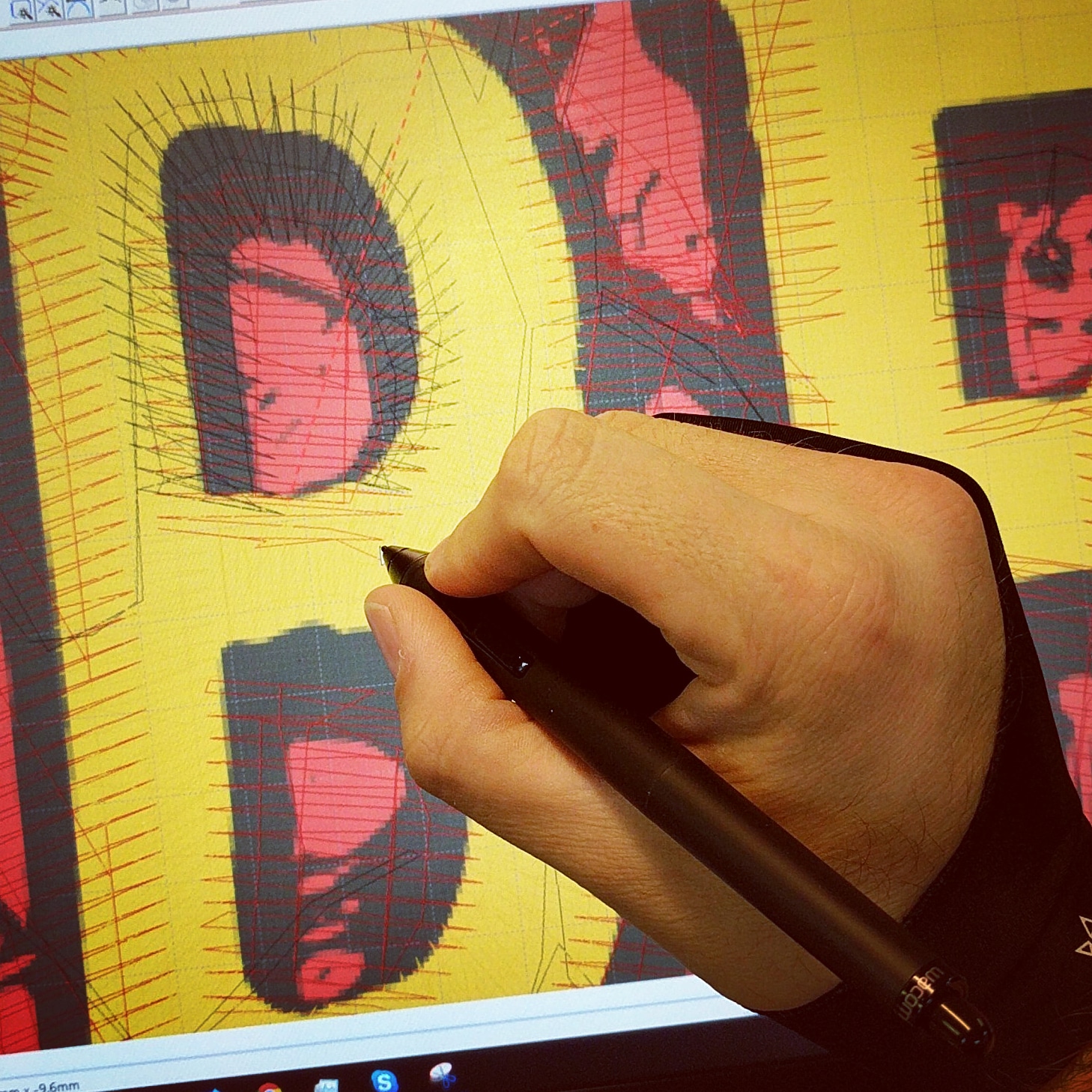Grasping the Embroidery Digitizing Refine: Your Ultimate Guide
Embroidery digitizing is a meticulous craft that requires precision and competence to translate detailed layouts right into electronic styles for maker needlework. As artisans begin on this journey to master the embroidery digitizing procedure, a thorough understanding of the essentials establishes the structure for excellence.

Comprehending Needlework Digitizing Fundamentals
Needlework digitizing essentials create the structure whereupon complex layouts are converted right into machine-readable layouts for specific sewing. This first action in the needlework digitizing procedure is critical for making certain that the last stitched item is a devoted depiction of the original style. Comprehending embroidery digitizing fundamentals involves grasping key principles such as stitch kinds, sew direction, density, underlay, and pull settlement.
Stitch types play a vital role in establishing the aesthetic and textural result of the embroidered design. By picking the ideal stitch kind, whether it be satin, fill, or running stitch, digitizers can achieve the desired result and improve the overall quality of the needlework. Furthermore, stitch instructions influences the flow and measurement of the style, while thickness figures out the spacing and protection of the stitches.
Additionally, underlay sewing supplies stability to the layout by protecting the fabric and avoiding distortion throughout the needlework process. Draw compensation is an additional necessary consideration to neutralize the natural tendency of material to contract when sewn. Mastering these needlework digitizing basics is basic for producing professional-quality embroidered products.
Choosing the Right Digitizing Software Program
Choosing the proper digitizing software is a vital choice that considerably affects the performance and top quality of the embroidery digitizing process. Digitizing for Embroidery. When selecting the ideal digitizing software program, it is important to think about variables such as the intricacy of designs you prepare to produce, the user-friendliness of the software program, the degree of consumer assistance offered, and the compatibility with your embroidery device
There are different digitizing software program choices readily available in the market, varying from basic programs for newbies to advanced software for professional digitizers. Some popular choices include Wilcom EmbroideryStudio, Hatch Embroidery Software, and PulseID. These software offer a vast array of tools and attributes to aid you develop detailed layouts easily.
Prior to making a choice, it is suggested to check out the different software alternatives via totally free tests or demos to figure out which one visit ideal suits your needs. Additionally, reviewing evaluations and seeking recommendations from experienced digitizers can give useful insights into the toughness and weak points of each software (Digitizing for Embroidery). By meticulously examining your demands and contrasting the attributes of different digitizing software, you can make an enlightened option that enhances your needlework digitizing workflow
Digitizing Devices and Methods

Optimizing Style Settings for Embroidery
Mastering the complexities of style settings is fundamental in achieving optimal lead to the embroidery digitizing procedure, structure upon the structure laid by recognizing digitizing devices and methods. When enhancing style settings for embroidery, it is essential to consider variables such as stitch kind, thickness, rug, pull compensation, and enrollment. Sew type selection impacts the total feel and look of the design, with options like satin, fill, and running stitches supplying various textures and effects. Density describes the spacing and density of stitches, impacting the design's protection and toughness. Proper underlay sewing gives security and avoids fabric distortion, specifically for complicated designs or on elastic materials. Draw payment adjusts for textile stretch during stitching, making sure accurate layout replication. Registration setups align various elements of the layout precisely, maintaining general design honesty. By fine-tuning these design setups, embroiderers can enhance the top quality and precision of their stitched creations.

Troubleshooting Common Digitizing Issues
When visit this page encountering common digitizing problems during the embroidery process, it is necessary to recognize the source and implement reliable solutions immediately. you can find out more One common issue is stitch thickness concerns, where stitches may be as well thick, causing the material to tighten, or also sparse, resulting in voids in the style. Adjusting the stitch thickness setups in the digitizing software can assist settle this issue.
One more regular difficulty is thread breaks during the embroidery procedure. This can take place as a result of various reasons such as inaccurate stress settings, dull needles, or utilizing low-grade string. Ensuring proper maintenance of the embroidery maker, consisting of normal needle changes and tension adjustments, can reduce the incident of thread breaks.
Additionally, design registration errors can lead to misaligned aspects within the embroidery style. Inspecting the style placement in the digitizing software program and making necessary adjustments before sewing can aid in preventing this concern. By resolving these usual digitizing concerns without delay and properly, you can make certain a smoother needlework procedure and high-grade ended up items.
Verdict
Finally, understanding the needlework digitizing procedure needs a solid understanding of the basics, the right selection of software program, and expertise of tools and techniques. Optimizing layout setups and fixing typical digitizing issues are crucial action in making certain high-grade needlework results. By following these steps diligently, one can attain precision and effectiveness in the digitizing process.